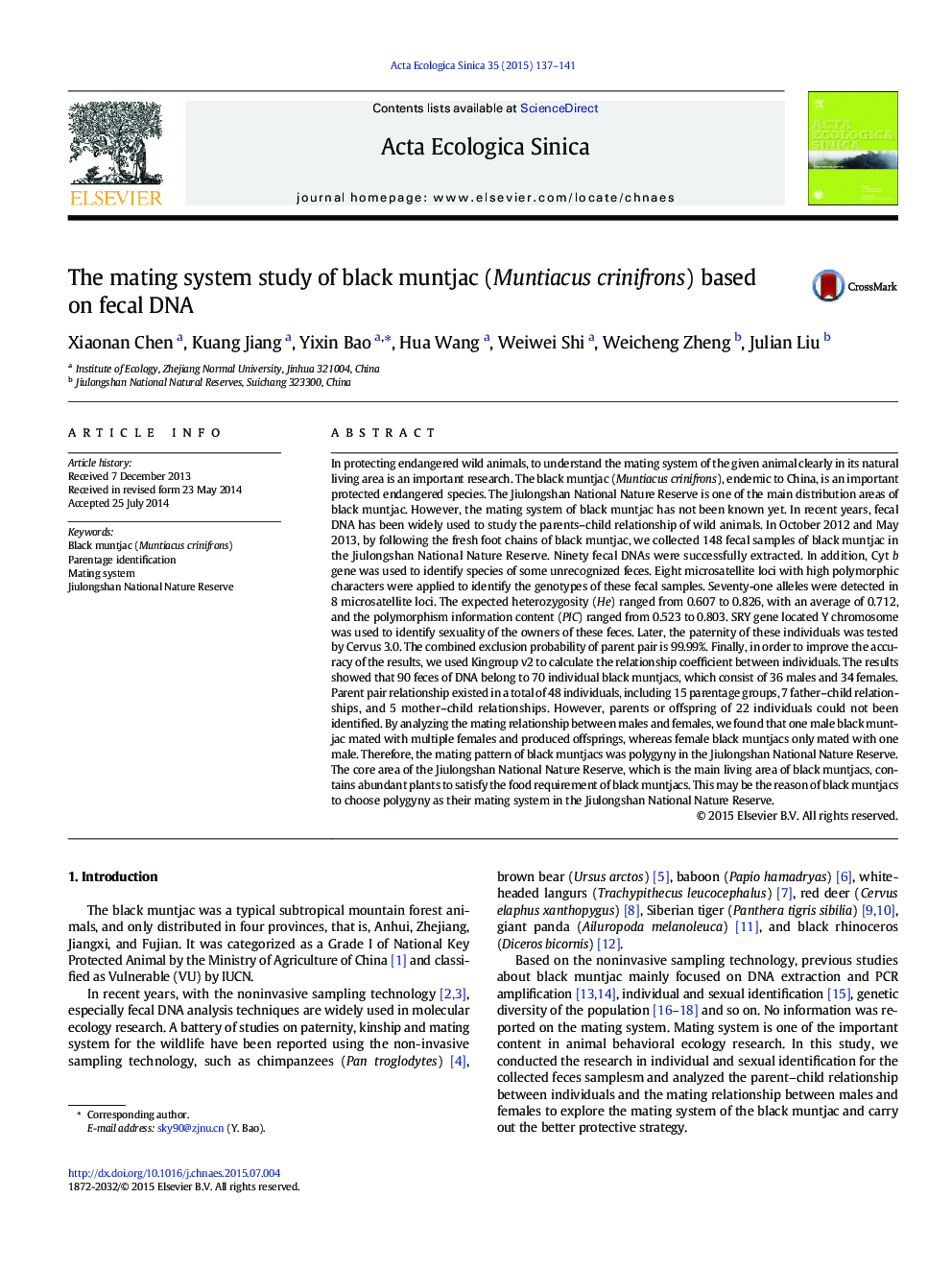| Article ID | Journal | Published Year | Pages | File Type |
|---|---|---|---|---|
| 4379771 | Acta Ecologica Sinica | 2015 | 5 Pages |
In protecting endangered wild animals, to understand the mating system of the given animal clearly in its natural living area is an important research. The black muntjac (Muntiacus crinifrons), endemic to China, is an important protected endangered species. The Jiulongshan National Nature Reserve is one of the main distribution areas of black muntjac. However, the mating system of black muntjac has not been known yet. In recent years, fecal DNA has been widely used to study the parents–child relationship of wild animals. In October 2012 and May 2013, by following the fresh foot chains of black muntjac, we collected 148 fecal samples of black muntjac in the Jiulongshan National Nature Reserve. Ninety fecal DNAs were successfully extracted. In addition, Cyt b gene was used to identify species of some unrecognized feces. Eight microsatellite loci with high polymorphic characters were applied to identify the genotypes of these fecal samples. Seventy-one alleles were detected in 8 microsatellite loci. The expected heterozygosity (He) ranged from 0.607 to 0.826, with an average of 0.712, and the polymorphism information content (PIC) ranged from 0.523 to 0.803. SRY gene located Y chromosome was used to identify sexuality of the owners of these feces. Later, the paternity of these individuals was tested by Cervus 3.0. The combined exclusion probability of parent pair is 99.99%. Finally, in order to improve the accuracy of the results, we used Kingroup v2 to calculate the relationship coefficient between individuals. The results showed that 90 feces of DNA belong to 70 individual black muntjacs, which consist of 36 males and 34 females. Parent pair relationship existed in a total of 48 individuals, including 15 parentage groups, 7 father–child relationships, and 5 mother–child relationships. However, parents or offspring of 22 individuals could not been identified. By analyzing the mating relationship between males and females, we found that one male black muntjac mated with multiple females and produced offsprings, whereas female black muntjacs only mated with one male. Therefore, the mating pattern of black muntjacs was polygyny in the Jiulongshan National Nature Reserve. The core area of the Jiulongshan National Nature Reserve, which is the main living area of black muntjacs, contains abundant plants to satisfy the food requirement of black muntjacs. This may be the reason of black muntjacs to choose polygyny as their mating system in the Jiulongshan National Nature Reserve.
